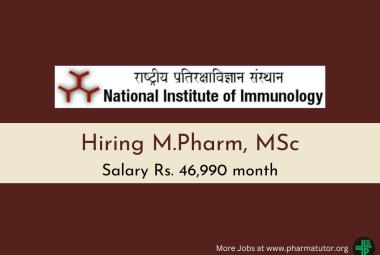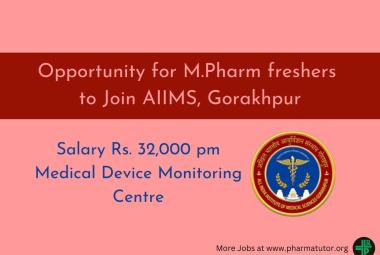




September 2016 ARTICLE LIST >>
PharmaTutor (September - 2016)
Print-ISSN: 2394 - 6679
e-ISSN: 2347 - 7881
(Volume 4, Issue 9)
Received On: 10/01/2016; Accepted On: 12/04/2016; Published On: 01/09/2016
AUTHORS:
Abdul Waheed*, Swati Pathak, Roohi Mirza
Department of Pharmacology, Amity Institute of Pharmacy, Amity University, Noida, U.P. India
abdul.waheed2050@gmail.com
ABSTRACT: Epilepsy is a chronic brain disorder characterized by tendency to recurrent seizures or fits. The seizures can leads to loss of consciousness, disturbance of movement, muscle spasms, autonomic and mental functions. Epilepsy is developed because of imbalance in nerve signalling chemical called neurotransmitters. During epilepsy, the level of excitatory neurotransmitter glutamate increases and the level of inhibitory neurotransmitter GABA decrease. These lead to abnormal signalling in brain causes epilepsy. Primary diagnosis of epilepsy includes eye–witness and family history. Electroencephalograph (EEG) is the cornerstone for diagnosis of epilepsy and measures the brain wave activity. Neuroimaging like computed tomography (CT) scan, magnetic resonance imaging (MRI) and positron emission tomography (PET) techniques are used to diagnose abnormalities in structure and function of brain. Video recording is also useful for the monitoring of epileptic events. The most common approach of treatment is to prescribe antiepileptic drugs (AEDs). Three generations of AEDs including phenytoin, valproate, carbamazapine, lamotrigine, Oxcarbazepine, Primidone, Phenobarbitone, Gabapentin, Topiramate, Levetiracetam, Felbamate, Rufinamide, Zonisamide, Tiagabin and Vigabatrin etc. are prescribed. These AEDs have some teratogenic effects on pragnent woman and lactating mother; need precautions. Instead of pharmacological approaches, Non-pharmacological approaches also used for the treatment of epileptic seizures like ketogenic diet, atkins diet, yoga etc. Thr purpose of this review is to update the current knowledge on epilepsy classification, diagnostics, approaches of treatment, pathophysiology, mechanism of epileptogenesis and teratogenic effects.
How to cite this article: Waheed A, Pathak S, Mirza R; Epilepsy: A brief review; PharmaTutor; 2016; 4(9); 21-28
[ABSTRACT WITH CITATION] [VIEW AS HTML]

REFERENCES:
1. Thurman DJ et al; Standards for epidemiologic studies and surveillance of epilepsy; Epilepsia; 2011; 52 (Suppl. 7); 2-26.
2. Czapinski P, Blaszczyk B and Czuczwar SJ; Mechanisms of Action of Antiepileptic Drugs; Current Topics in Medicinal Chemistry; 2005; 5(1); 3-14.
3. Engelborghs S, D’Hooge R, De Deyn PP; Pathophysiology of epilepsy; Acta neurol. Belg; 2000; 100(4); 201-213.
4. Gidal BE, Garnett WR; Epilepsy. In: Dipiro JT, Talbert RL, Yee GC, Matzke GR, Wells BG, Posey LM, eds. Pharmacotherapy: a pathophysiologic approach, USA; McGraw-Hill Companies Inc; 6th ed; 2005.
5. Meisler MH and Kearney JA; Sodium channel mutations in epilepsy and other neurological disorders; Journal of Clinical Investigation; 2005; 115(8); 2010-2017.
6. Schachter SC, Shafer PO and Sirven JI, (3 March 2014) What causes Epilepsy and Seizures, Available at: http://www.epilepsy.com/learn/epilepsy-101/what-causes-epilepsy-and-seizures (Accessed: 5th July 2015).
7. Rudzinski LA and Shih JJ; The Classification of Seizures and Epilepsy Syndromes; Novel Aspects on Epilepsy; 2011.
8. Patsalos PN and Landmark CJ; Drug interactions involving the new second and third generation Anti-epileptic Drugs; Expert Rev. Neurother; 2010; 10(1); 119-140.
9. Luszczki JJ; Third-generation antiepileptic drugs: mechanisms of action, pharmacokinetics and interactions; Pharmacol Rep; 2009; 61(2); 197-216.
10. Meinardi H et al; Selection of antiepileptic drug polytherapy based on mechanism of action: the evidence reviewed; Epilepsia; 2000; 41(11); 1364-1374.
11. Saxena VS and Nadkarni VV; Nonpharmacological treatment of epilepsy; Ann Indian Acad Neurol; 2011; 14(3); 148–152.
12. Ballaban-Gil K et al; Complications of the ketogenic diet; Epilepsia; 1998; 39(7); 744-748.
13. Gaby AR; Natural Approaches to Epilepsy; Alternative Medicine Review; 2007; 12(1); 9-24.
14. Lindhout D and Omtzigt JDC; Teratogenic effect of anti epileptic drugs: Implications for the management of epilepsy in woman of childbearing age; Epilepsia; 1994; 35(suppl. 4); S19-S28.
15. Lander CM; Antiepileptic drug in pregnancy & lactation; Australian prescriber; 2008; 31; 70-72.
16. Hoppe M et al;EEG in epilepsy; Textbook of Stereotactic and Functional Neurosurgery; 2009; 2575-2585.
17. Matthew walker; Diagnosing Epilepsy. Epilepsy research UK 2014
http://www.epilepsyresearch.org.uk/wp-content/uploads/2014/04/diagnosingepilepsy.pdf













